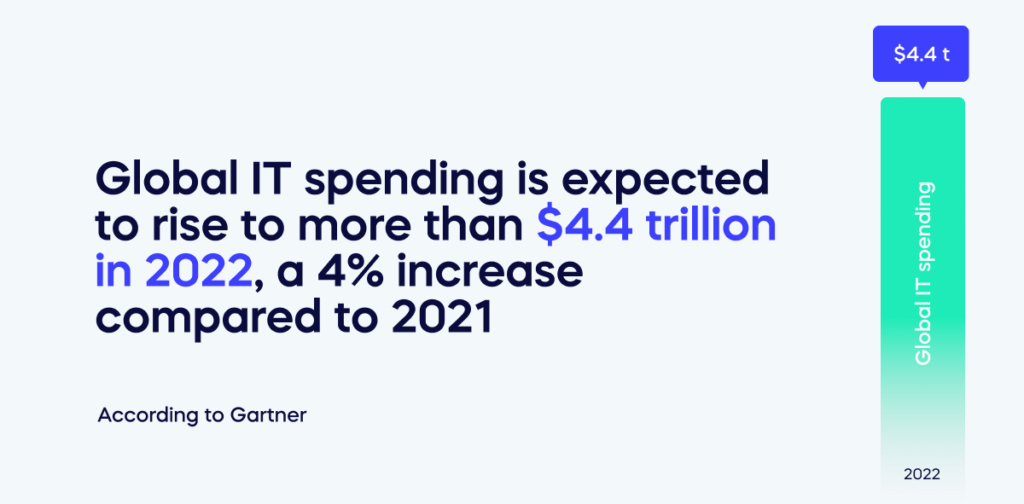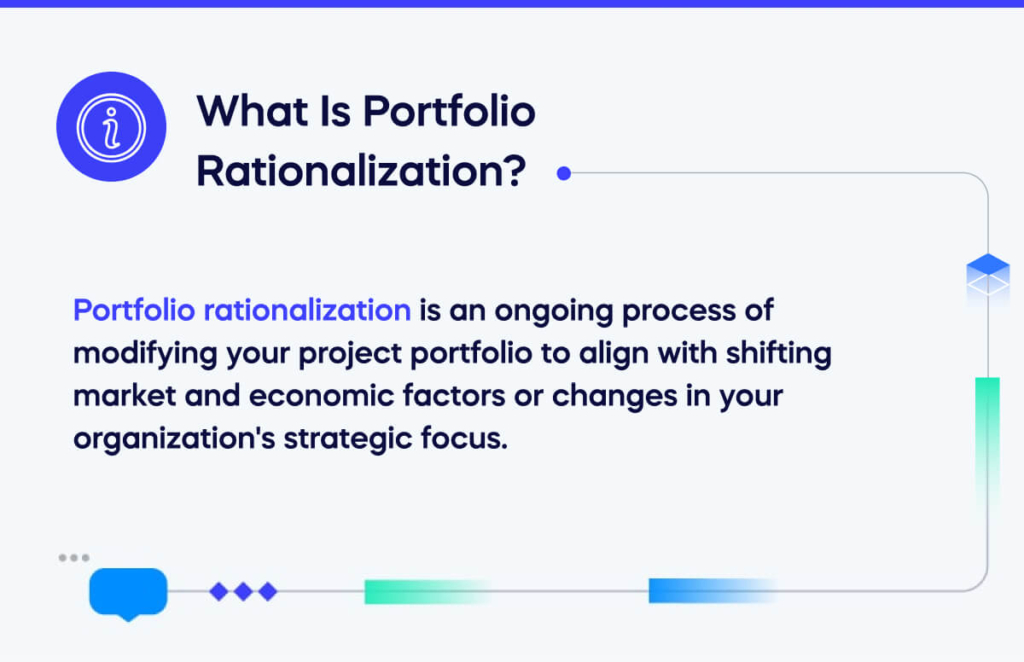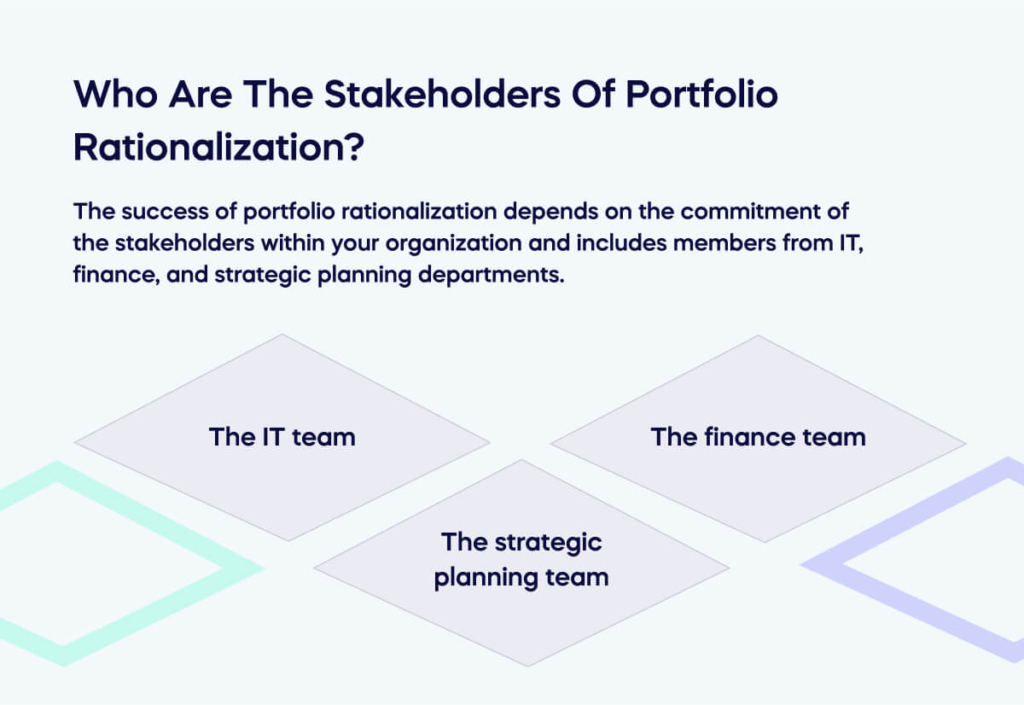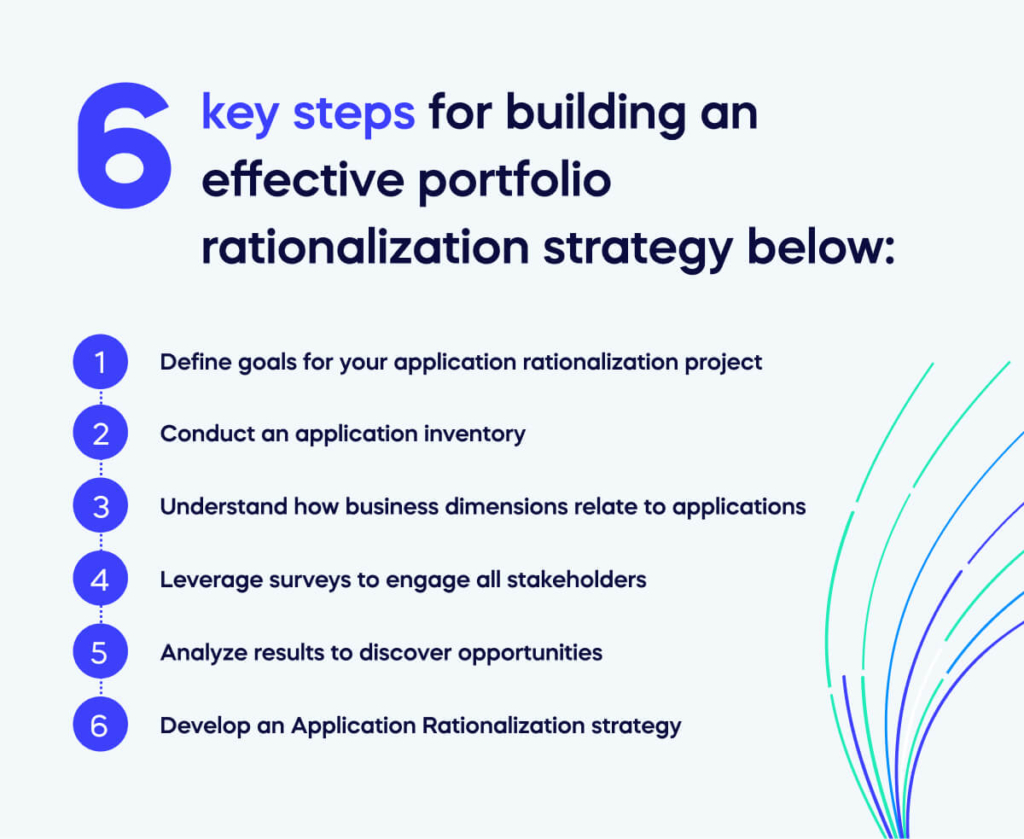Are you a CIO, C-Suite executive, or software asset manager looking to maximize the value of your software assets? If so, you need to consider portfolio rationalization, an often overlooked yet powerful process that can help you do just that.
According to Gartner, Global IT spending is expected to rise to more than $4.4 trillion in 2022, a 4% increase compared to 2021. This increase comes even after a significant growth rate of 9.5% in the previous year.

With global IT spending on the rise, CIOs, C-Suite executives, and software asset managers should consider portfolio rationalization, a process of reviewing your software applications to improve cost efficiency when managing software assets. This results in a reduction in the total cost of ownership and a software ecosystem that is more manageable.
Businesses can use portfolio rationalization to assist with digital transformation initiatives and reduce software sprawl. With the rise of cloud-native platforms, it can be difficult to know what applications you own and how they’re used. Portfolio rationalization helps identify unused and underperforming applications, so you can transition the resources away from them and focus on those delivering the most value.
Portfolio rationalization can be achieved by identifying which applications are essential to your organization, assessing their usage and cost, and then rationalizing the portfolio based on these assessments. This can involve retiring applications, consolidating servers or databases, negotiating better pricing with vendors, and leveraging cloud-based solutions.
In addition to cost savings, rationalizing a software portfolio can help simplify the complexity of managing multiple software applications. It can also mitigate risk by making it easier to identify when a software application is outdated or non-compliant with industry standards.
This article provides an overview of portfolio rationalization, how it benefits your business, and the key steps you should take when evaluating your software assets. By the end, you will understand what portfolio rationalization is and how it can help you improve the efficiency of your software assets.
What Is Portfolio Rationalization?

Portfolio rationalization is an ongoing process of modifying your project portfolio to align with shifting market and economic factors or changes in your organization’s strategic focus.
To better understand your current situation, IT leaders should assess available resources (supply) and the resource requirements of all ongoing projects (demand).
Compare what you currently have with what you need in the short, medium, and long term while identifying any limitations or constraints that may affect your software stack.
To improve resource management within the new constraints, you should eliminate less important projects and focus on those with higher priority. This will help you allocate resources more efficiently based on project rankings.
If businesses get portfolio rationalization right, they can achieve a higher level of cost-efficiency by controlling and minimizing software costs and improving organizational effectiveness by ensuring proper resources are allocated to suitable projects.
Who Are The Stakeholders Of Portfolio Rationalization?

The success of portfolio rationalization depends on the commitment of the stakeholders within your organization and includes members from IT, finance, and strategic planning departments.
The IT team is responsible for defining the criteria for evaluating and rationalizing projects and monitoring the project portfolio to ensure that the IT assets are being used optimally. IT will also need to develop a process for assessing applications and determining the best course of action for each.
It’s also crucial that IT departments maintain a close relationship with other stakeholders to properly identify and prioritize projects. This will help ensure that all stakeholders are on the same page and have a common understanding of the desired outcomes.
The finance team should be involved in evaluating and monitoring the cost implications of any changes to the project portfolio. They should also negotiate better contracts with vendors, ensuring value for money is achieved from software purchases.
The finance department should also be aware of any potential legal or regulatory concerns arising from rationalizing the portfolio. This can include ensuring existing software applications comply with data protection laws and regulations.
The strategic planning team should be consulted to ensure the rationalization process aligns with the organization’s long-term goals and objectives. They should also be involved in assessing the strategic value of any project before it is included in the portfolio.
Strategic planning is easily overlooked but can make a real difference in whether or not portfolio rationalization is successful, as it ensures that the IT projects chosen to be part of the portfolio are aligned with organizational strategy.
What Are The Benefits Of Portfolio Rationalization?
The advantages of portfolio rationalization are numerous. It can reduce costs, improve performance and efficiency, minimize risk, enable better decision-making, and maximize value from existing investments.
We will now break down the key benefits of portfolio rationalization in more detail.
- Cost Reduction – Evaluating existing software applications and eliminating redundancies can decrease overall costs. This could include finding ways to consolidate licenses or switching to cloud-based solutions.
- Improved Performance & Efficiency – Rationalizing your software stack enables better management of your IT assets, leading to improved performance and efficiency. This could include streamlining processes or reducing the need for manual labor.
- Risk Minimization – Regularly evaluating and rationalizing your project portfolio can reduce the risk of running outdated or unsupported software. This can help you avoid potential security vulnerabilities or compliance issues.
- Better Decision-Making – Understanding the resources and capabilities of your project portfolio can help you make better decisions about resource allocation. This can enable businesses to invest in the right projects and allocate resources more effectively.
- Maximizing Value From Existing Investments – Rationalization can help you identify which applications are most beneficial and enable businesses to focus more on those applications. This allows them to get the most value from their existing investments and make better decisions about future investments.
How To Build A Successful Portfolio Rationalization?
A successful portfolio rationalization strategy requires clearly understanding your organization’s goals and objectives. The success of any project management initiative begins with an effective design, which should be documented and communicated to all stakeholders.
Your strategy should include the criteria for evaluating projects and a plan for monitoring the portfolio and making changes to ensure it is optimized.

We’ve outlined six key steps for building an effective portfolio rationalization strategy below:
1. Define goals for your application rationalization project
Start by outlining the objectives and goals of your portfolio rationalization project. This will give you a clear understanding of what needs to be achieved, which is important for setting the right criteria for evaluating projects.
2. Conduct an application inventory
Document the current state of your project portfolio and identify any redundancies, gaps, or inefficiencies. This will give you an overview of what needs to be addressed and enable you to identify projects that should be rationalized.
3. Understand how business dimensions relate to applications
Business dimensions are often overlooked during this stage of the process. Understanding how applications relate to the overall business strategy and operations is important. This will enable you to make more informed decisions about which projects to keep and which should be rationalized.
4. Leverage surveys to engage all stakeholders
Engaging all stakeholders is essential for building an effective portfolio rationalization strategy. Surveys can be used to gather feedback from different departments and roles within the organization, which can help inform decisions about what projects to prioritize.
The C-Suite should also be consulted to ensure the strategy aligns with the company’s overall goals.
5. Analyze results to discover opportunities
Once you’ve gathered the necessary data, it’s time to analyze the results. The process can help you identify risks and opportunities that need attention. It can also pinpoint areas where your organization might need more investments or resources. Some parts of the process can be automated using AI and Machine Learning, making it simpler to get insights.
6. Develop an Application Rationalization strategy
The final step is to develop an application rationalization strategy based on the results of your analysis. A clear plan for the project’s execution and implementation of necessary changes will help you execute your strategy efficiently and on schedule.
Portfolio Rationalization: A Digital Age Must-Have For IT Leaders
As an IT leader, you already know that the digital age brings both opportunities and challenges.
With the technology market becoming more saturated, businesses constantly battle for survival. Not to mention rising costs and increasing competition that require strategic allocation of resources for long-term success.
In the early stages of digital transformation, the main hurdle for enterprises was connecting different software solutions. There were certain workflows or processes that weren’t yet integrated into applications. But now, the challenge is determining which applications are essential and should be retained to add value.
The solution lies in having an effective portfolio rationalization strategy.
Such a strategy can help businesses make better investment decisions and optimize portfolios for maximum efficiency. This means fewer resources are wasted on redundant software, and more can be allocated to the centers for innovation, evaluation, and adaptability.

